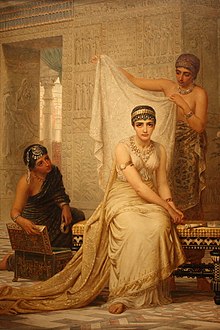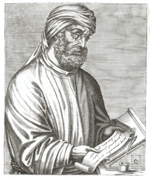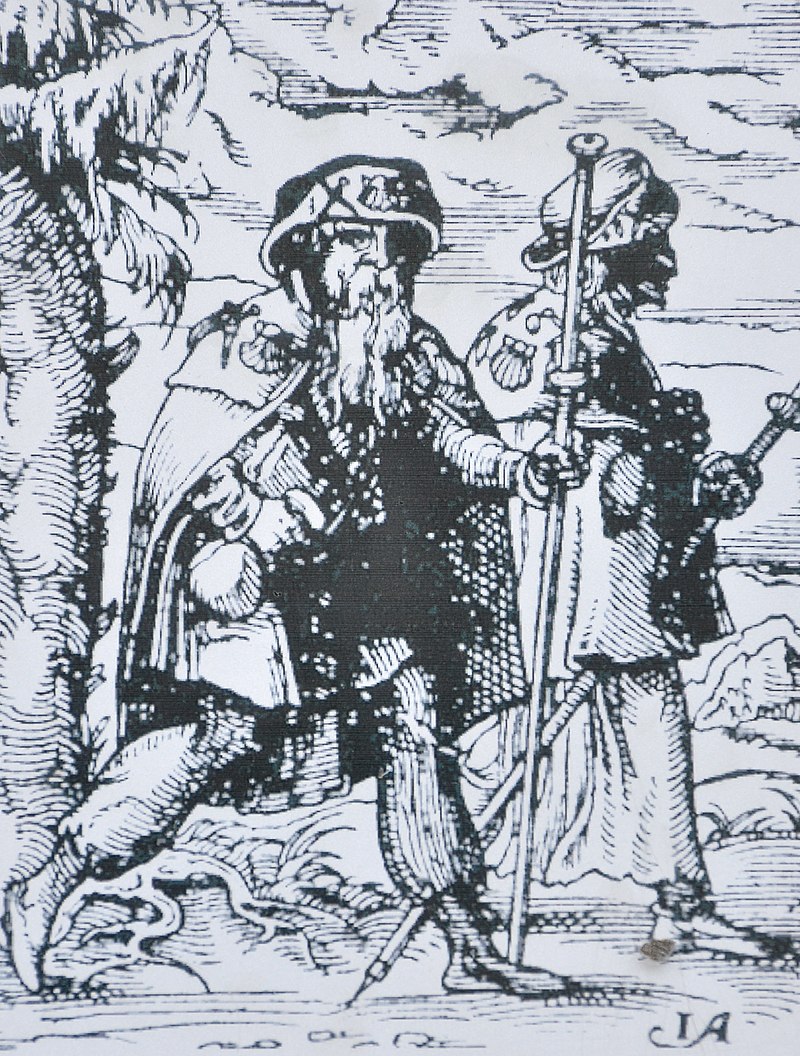Are we in for a new “national nightmare?” Half the voters in the next election seem to think so…
* * * *
I just got back from a mini-vacation: Six days visiting New York City, from a home base in Staten Island. During much of that trip, conversation centered on November’s presidential election.
Which brings up Matthew 13:44-52, the Gospel for this morning’s Daily Office.
 I’m specifically referring to Matthew 13:52, where Jesus told His disciples, “Therefore every scribe who has been trained for the kingdom of heaven is like a householder who brings out of his treasure what is new and what is old.*”
I’m specifically referring to Matthew 13:52, where Jesus told His disciples, “Therefore every scribe who has been trained for the kingdom of heaven is like a householder who brings out of his treasure what is new and what is old.*”
And a reminder: The full and accurate name of this blog is “DOR Scribe,” as “Daily Office Reader Scribe.” So here’s the “what is new” part of Matthew 13:52, from a treasure trove of 65 years’ worth of wisdom. (Or at least “something new” to consider from the SCRIBE‘s storeroom. Which link includes the image above left):
No matter who half “plus one” of the American people elect as their next president, the rest of those voters will think we are about to embark on another “long national nightmare.” Put another way, no matter who the next president is, he or she is going to face intense – if not rabid – opposition from close to half the American people.
If you think I’m exaggerating, check these four links: For Trump, Trump presidency would be a ‘nightmare,’ says Joseph Stiglitz, and The Trump nightmare is real. Clinton could lose this.
From the other side of the aisle, consider these: The Nightmare World of a Hillary Clinton Presidency, and A Clinton Presidency: Humanity’s Worst Nightmare. Or you could Google the term “presidency nightmare,” and add either candidate’s name.
That’s where the “what is old” part of Matthew 13:52 comes in. Simply put:
We’ve been through worse before!
Think the American Civil War. Think the Great Depression. Or think about the episode in our national history that led to the “long national nightmare” quote in the first place.
 That quote came from Gerald Ford, when he was sworn in as president after Richard Nixon resigned. (A result of the Watergate scandal. For more on Ford’s speech see This Day in Quotes: “Our long national nightmare is over.” But see also a parody of the phrase – from The Onion, a “digital media company and news satire organization” – which quoted President George W. Bush as saying – on his taking office – “Our Long National Nightmare Of Peace And Prosperity is Finally Over.”)
That quote came from Gerald Ford, when he was sworn in as president after Richard Nixon resigned. (A result of the Watergate scandal. For more on Ford’s speech see This Day in Quotes: “Our long national nightmare is over.” But see also a parody of the phrase – from The Onion, a “digital media company and news satire organization” – which quoted President George W. Bush as saying – on his taking office – “Our Long National Nightmare Of Peace And Prosperity is Finally Over.”)
Be that as it may, here’s the full quote from Gerald Ford’s acceptance speech in 1974:
My fellow Americans, our long national nightmare is over. Our Constitution works; our great Republic is a government of laws and not of men. Here the people rule. But there is a higher Power, by whatever name we honor Him, who ordains not only righteousness but love, not only justice but mercy.
And that sentiment – about a national nightmare being over – could foreshadow January 20, 2020. It could well foreshadow how those 40% of voters – disappointed by the outcome of the 2016 election – will feel when – it is entirely possible – a new president takes office. (And when – it is entirely possible – that new president will be neither Donald Trump nor Hillary Clinton.)
 In the meantime, we’ve got to get through the next four years. (No matter who wins. But in either case it may be more of a “Jimmy Carter collapsing” endurance run…)
In the meantime, we’ve got to get through the next four years. (No matter who wins. But in either case it may be more of a “Jimmy Carter collapsing” endurance run…)
For one thing, there’s the fact that – no matter who wins – he or she will face rabid opposition from at least 40% of the American electorate. That alone means neither Donald Trump nor Hillary Clinton will be able to do as much damage as their opponents argue.
For another thing, I’ve been surrounded by negativity these past eight years. (Of Obama’s presidency.) And – quite frankly – it’s getting very boring. (I’ve taken to saying “Thank you Obama!” whenever there’s an arch-conservative around and we pass a station with low gas prices. Not because I believe he’s responsible, but just because it “ticks them off.”)
And third, I feel it’s my duty as an ostensibly-good Christian to take the high road.
For example, consider this from my companion blog:
The Presidents Club gave me a sense that – generally speaking – the men who occupied the White House have been – overall – decent, honorable and capable. Then too, Life’s a Campaign gave me a sense that maybe the same applies to politicians in general. (Gasp!)
See “Brother from another mother” and other ex-Prez tales. And who knows, maybe the same thing is true of both Donald and Hillary. Maybe beneath all the lies and distortion spread by their political enemies – a practice now more “commonplace” than ever – there are in fact two people who are – deep down – “decent, honorable and capable.”
Then there was “Great politicians sell hope,” which included the following:

Which seems to indicate the candidate who offers hope rather than fear will win. (Think Ronald Reagan.) And that post included some other interesting observations, at least to me.
For one thing, “Maybe today’s politicians are simply a reflection of the nastiness that seems to have taken hold of a large part of our population.” The flip side of that observation – that today’s politicians simply reflect a generalized nastiness that has taken hold of a large number of voters – is this: “Swing voters need to figure out what a politician really stands for, beyond those nasty things he has to say to get elected.”
But those observations don’t get us any closer to taking the high road.
For that we could go back to our Baptismal Covenant. (That’s the question-and-answer “statement of faith [about] how we, as Christians, are called to live out our faith”*):
[Celebrant:] Will you persevere in resisting evil, and , whenever
you fall into sin, repent and return to the Lord?
[People:] I will, with God’s help…
[Celebrant:] Will you seek and serve Christ in all persons, loving
your neighbor as yourself?
[People:] I will, with God’s help.
[Celebrant:] Will you strive for justice and peace among all
people, and respect the dignity of every human
being?
[People:] I will, with God’s help.
As a practical matter, the “resisting evil” part could reflect how fully 40% of the American people will rabidly oppose the new president, no matter who gets elected. Then too, if the voters choose the wrong candidate, they will be free – in four years – to undo their mistake. (To “repent and return.” For example, if a certain candidate “promises the moon” and fails to deliver, the voters could turn on that candidate-become-president in the proverbial New York Minute.)
Which arguably ties in with my “mini-vacation: Six days visiting New York City.” (See “preordained before the beginning of time,” in Judith, Esther, and ANOTHER lady, etc.)
As far as the latter part of the quoted part of the covenant – especially the part about respecting the dignity of every human being – consider Governor Arnold Schwarzenegger.
 When he first took office, Arnold was something of a blowhard himself.
When he first took office, Arnold was something of a blowhard himself.
In one notable example, he characterized opponents in the legislature of California as girlie men, in a battle over the state budget.
But in the fullness of time he backed off:
Schwarzenegger then went against the advice of fellow Republican strategists and appointed a Democrat, Susan Kennedy, as his Chief of Staff. Schwarzenegger gradually moved towards a more politically moderate position, determined to build a winning legacy with only a short time to go until the next gubernatorial election. [E.A.]
And who knows? Maybe the next president too will eventually “move towards a more politically moderate position.” More moderate, that is, than his or her political opponents think possible.
But here’s the point of this post. (In case I’m being too subtle.) Each of the three questions above – in the question-answer format – has the same answer: “I will, with God’s help.” So maybe we should face the upcoming presidential election with this in mind: “With God’s help, we can get through anything. Even if – God forbid! – [fill in the blank] gets elected!”
* * * *
 Arnold “flexed his pecs” here…
Arnold “flexed his pecs” here…
(but later had to retract his girlie men comment).
* * * *
The upper image is courtesy of Nightmare – Wikipedia, the free encyclopedia. The caption: “The Nightmare (Henry Fuseli, 1781).” The Henry Fuseli link added:
Since its creation, it has remained Fuseli’s best-known work… Due to its fame, Fuseli painted at least three other versions… The canvas seems to portray simultaneously a dreaming woman and the content of her nightmare. The incubus and the horse’s head refer to contemporary belief and folklore about nightmares, but … critics were [also] taken aback by the overt sexuality of the painting…
After noting again that contemporary critics “found the work scandalous due to its sexual themes,” the link pointed out that the main subject of the painting – the woman – seems to have been prompted by “unrequited love.” It seems that Fuseli had “fallen passionately in love with a woman named Anna Landholdt in Zürich … the niece of his friend, the Swiss physiognomist Johann Kaspar Lavater.” However, Landholdt “married a family friend soon after” the artist proposed to her…
* * * *
The Daily Office readings are courtesy of The Lectionary – Satucket Software Home Page. The readings for September 25, 2016 are: “AM Psalm 66, 67; PM Psalm 19, 46, Hosea 2:2-14; James 3:1-13; Matthew 13:44-52. The translation of Matthew 13:52 is the one used in the four-volume Daily Office Readings, as offered – for example – by Amazon.com
The “Jimmy Carter” image is courtesy of ussporthistory.com. See also Jimmy Carter’s Collapse in a Maryland Road Race Sparks a Moment of Fear.
The quotes from the “Baptismal Covenant” are courtesy of The (Online) Book of Common Prayer, at the link Holy Baptism, at pages 304-305.
The lower image is courtesy of giphy.com.


 I started a mini-vacation back on Wednesday, September 14. (To Staten Island, as a base for visits to New York City.) During that time I’ve also been keeping up with the
I started a mini-vacation back on Wednesday, September 14. (To Staten Island, as a base for visits to New York City.) During that time I’ve also been keeping up with the  Starting with the
Starting with the  So Haman “
So Haman “ Those words are repeated in
Those words are repeated in  From which a host of
From which a host of 

 The next major
The next major  See also the
See also the  You can read more about St. Matthew in the 2014 and 2015 posts. But note that this St. Matthew is not to be confused with “
You can read more about St. Matthew in the 2014 and 2015 posts. But note that this St. Matthew is not to be confused with “ St. Mark, by
St. Mark, by  Re: “We’re all in this together!” The link is to the lyrics from a song in the 2006
Re: “We’re all in this together!” The link is to the lyrics from a song in the 2006 
 As the last post noted, it’s been a busy several weeks since July 23, when I left God’s Country. (The
As the last post noted, it’s been a busy several weeks since July 23, when I left God’s Country. (The  For example, the Gospel is
For example, the Gospel is  See the day’s Bible readings – in the “
See the day’s Bible readings – in the “ The “Way of St. James pilgrims (1568)”
The “Way of St. James pilgrims (1568)”
 At the end of
At the end of  For example, in the picture at the top of the page, St. James is seen
For example, in the picture at the top of the page, St. James is seen 
 On that note, the “Central Pyrenees” – at left – look way too much like the Chilkoot &^%$ Trail…
On that note, the “Central Pyrenees” – at left – look way too much like the Chilkoot &^%$ Trail…